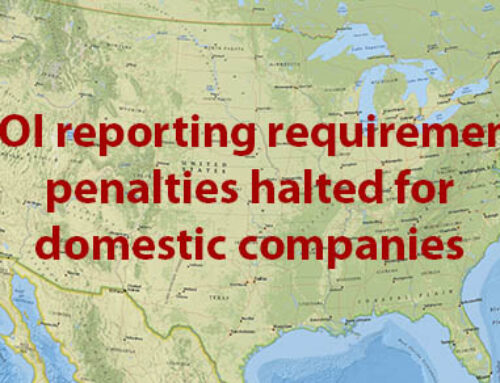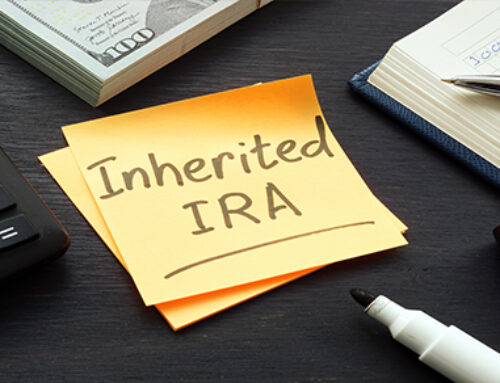
The IRS has issued new guidance updating the rules for using optional standard mileage rates when calculating “above-the-line” deductions for the costs of operating an automobile for certain purposes. IRS Revenue Procedure 2019-46 also lays out rules for establishing the amount of an employee’s transportation expenses that are reimbursed using the optional standard mileage rates.
Understanding the allowable deductions
The Tax Cuts and Jobs Act (TCJA) temporarily suspends all miscellaneous itemized deductions that are subject to the 2% floor, until 2026. The suspension applies to most employees’ miscellaneous itemized deductions for unreimbursed business expenses — including the costs of operating an automobile for business and unreimbursed travel costs.
But self-employed individuals and qualified employees (including Armed Forces reservists, qualifying state or local government officials, educators, and performing artists) are still allowed to deduct unreimbursed expenses during the suspension. The suspension doesn’t preempt the deductions because these taxpayers can claim the expenses “above the line,” or when computing their adjusted gross income (AGI), rather than as itemized, below-the-line deductions. The guidance provides rules for how to do so.
Using the business standard rate
For owned or leased automobiles used for business, taxpayers generally can deduct an amount equal to either:
- The business standard mileage rate (for 2019, 58 cents) multiplied by the number of business miles traveled, or
- The actual fixed and variable costs paid that are attributable to traveling those business miles.
The new guidance provides that eligible taxpayers generally can use the business standard mileage rate instead of actual fixed and variable costs when computing AGI, subject to certain limitations. (For example, you can’t use the business rate for fleet operations of five or more autos.)
If you opt to use the business rate, though, you generally can’t also deduct your costs for items such as depreciation or lease payments, maintenance and repairs, tires, gasoline (including all taxes), oil, insurance, and license and registration fees.
You can, however, deduct parking fees and tolls attributable to business use above the line. Under certain circumstances, you also can deduct interest on the purchase of the automobile and related state and local property taxes. (If the auto isn’t used solely for business purposes, these expenses must be allocated accordingly.)
As for depreciation, taxpayers are required to reduce the basis of an automobile used in business by the greater of the amount of depreciation claimed or allowable. Under the guidance, in any year during which you use the business standard mileage rate, a specified per-mile amount (published annually by the IRS) is treated as both the depreciation claimed and the depreciation allowable.
The guidance also provides that taxpayers with deductible unreimbursed travel expenses can use the business standard mileage rate when calculating their AGI.
Documenting transportation expenses
The new guidance includes rules for documenting — or “substantiating” — the amount of an employee’s ordinary and necessary transportation expenses that an employer, its agent or a third party reimburses using a mileage allowance.
According to the guidance, an employee will be deemed to satisfy the substantiation requirements if he or she actually substantiates to the reimbursing party the time, place (or use) and business purpose of the expense. The amount is considered substantiated simply because the reimbursing party pays a mileage allowance instead of reimbursing the actual transportation expenses the employee incurs or may incur (subject to certain limitations).
Under the revenue procedure, self-employed individuals and qualified employees aren’t required to include in gross income the portion of a mileage allowance received from an employer, its agent or a third party that is less than or equal to the amount deemed substantiated. Assuming other requirements for accountable plans — plans that comply with IRS requirements for reimbursing workers for business expenses in which reimbursement isn’t counted as income — are met, that portion of the allowance isn’t reported as wages or other compensation and is exempt from withholding and payment of employment taxes.
The portion of an allowance that exceeds the substantiated amount, however, must be included in gross income and is treated as paid under a nonaccountable plan. As a result, such amounts are reported as wages or other compensation and subject to employment tax withholding and payment.
Be aware that taxpayers aren’t required to use the method described in the guidance to establish their reimbursed transportation expenses. If you maintain adequate records or other sufficient evidence, you can instead choose to substantiate your actual expense amounts.
The guidance provides additional rules for satisfying the requirements that employees return allowance payments that exceed substantiated amounts. If an employer provides an advance mileage allowance that anticipates more business miles than the employee substantiates, the employee must return a certain portion of the excess, depending on the type of allowance.
FAVR allowances
The revenue procedure also includes guidance on computing fixed and variable rate (FAVR) allowances to establish an employee’s automobile expenses. A FAVR is a mileage allowance that uses a flat rate or stated schedule that combines periodic fixed payments (for items such as depreciation or lease payments, insurance, registration and license fees, and personal property taxes) and variable rate payments (for items such as gasoline and all related taxes, oil, tires, and routine maintenance and repairs).
Employers must base the amount of a FAVR allowance on data that’s derived from the relevant geographic area and reflects retail prices. The data must be reasonable and statistically defensible in approximating the actual expenses an employee would incur as owner of the “standard automobile” (the automobile the payer selects to use as the basis for a specific FAVR allowance).
The guidance provides that the standard automobile cost for a calendar year can’t exceed 95% of the sum of the retail dealer invoice cost for the standard auto in the area and the state and local sales or use taxes on the purchase of the auto. (The IRS publishes the maximum standard auto cost annually.) Its guidance addresses the determination of business use percentage, allowance limitations and the payer’s recordkeeping and reporting obligations.
Effective now
The new IRS guidance is effective for deductible transportation expenses paid or incurred, and mileage allowances or reimbursements paid, on or after November 14, 2019. In addition to business driving expenses, it also addresses the deductible costs of operating a vehicle for charitable, medical or moving purposes. We’d be pleased to answer your questions regarding mileage-rated deductions.





